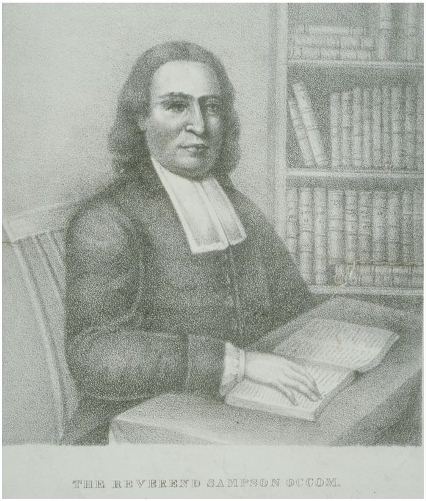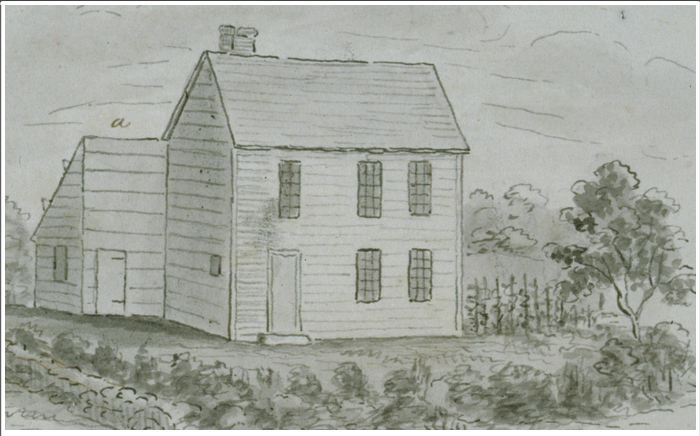By Barbara Austen
In the 18th century the most famous Mohegan was probably Samson Occom, a preacher and teacher, who also served as a tribal councilor, herbal doctor, fisherman, hunter, farmer, and was a father, husband, and brother.

Reverend Samson Occom. Lithograph, 1830s. This later portrait is based on an engraving made in Europe during the 1780s – Connecticut Historical Society, 1843.6.00
Born in Connecticut at Mohegan (now Montville and the Mohegan Reservation) in 1723, Occom converted to Christianity in 1741 during the Great Awakening, a period of extensive evangelical preaching. He was educated in Greek, Latin, and English at Eleazar Wheelock’s school in Lebanon, Connecticut, between 1743 and 1747. In 1758 he was ordained as a Presbyterian minister. He and his wife Mary Fowler had 10 children.
Although he was educated in the Anglo world and depended on white religious institutions for financial support, Occom felt a responsibility to his family, his tribal community and to American Indians in general. In a letter now in the Samson Occom Papers at the Connecticut Historical Society, he wrote: “I am Now fully Convinc’d, that the Indians must have Teachers of the own color or Nation, –They have very great… Prejudice against the White People, and they have too much good reason for it—they have been imposed upon, too much . . .”
Through his missionary work, Occom sought to renew diplomatic ties between the Mohegans and the Mohawks and Oneida, and helped to establish an group known as the Brotherton Indians, formed of Christian members of several Southern New England tribes. Shortly before the American Revolution, the Brotherton Indians began moving to western New York State, where Occom hoped they would be free from white influence and able to focus on self-determination and Christian worship. Occom died there in 1792. During the 1820s, the descendants of these Indians, after decades of pressure from increasing white settlement, relinquished their lands to the State of New York and moved farther west, to Wisconsin, where they established the town today known as Brotherton.

Map of the East Part of the Colony of Connecticut. Manuscript map, ca. 1770. This map shows Mohegan lands claimed by the Colony of Connecticut – Connecticut Historical Society, 1913.9.2.
The Samson Occom Papers at the Connecticut Historical Society is one of the largest holdings related to Occom in the US. The 236 items include letters, petitions, a diary, a donation book, sermons and speeches given by Occom, letters from his wife Mary, and sermons preached by his son in law Joseph Johnson. They provide an intriguing glimpse of the most famous Mohegan of the 18th century.
Barbara Austen is the Florence S. Marcy Crofut Archivist at the Connecticut Historical Society.
© Connecticut Public Broadcasting Network and Connecticut Historical Society. All rights reserved. This article originally appeared on Connecticut History | WNPR News
Note: ConnecticutHistory.org does not edit content originally published on another platform and therefore does not update any instances of outdated content or language.









